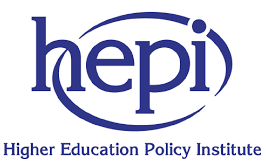This short article is designed to provoke thought. Using the century old ideas of the Surrealists I will argue that, like them in the 1920s and 1930s, we stand on the edge of an educational revolution that requires radical new shapes. I’d argue that our current position is rigid, abstracted, partial, preclusive and often mechanical where it needs in all cases to be specifically the reverse. Furthermore, when talking to students and employers they want agility, resilience, creativity, passion, systems thinking. In short, it often seems like the structure we inhabit in higher education actually stands between both parties and almost gets in the way, rather than enabling.
Surrealism in Britain was originally termed ‘Super-realism’ by it’s prominent champion Sir Herbert Read, but he fell into line after the First Surrealist Exhibition in 1936, acknowledging it was less catchy. Whatever the title though, the point remained the same, as Andre Breton stated, Surrealism was an attempt at absolute expression by the ‘Unification of interior and exterior reality … confronting one another on every possible occasion … reciprocal attraction and interpenetration … interplay of forces all the extension necessary for these two adjoining realities to become one and the same thing.’ (Andre Breton, David Gascoyne, ‘What is Surrealism?’ pp.49-50).
My first point would be that we need to return to such an ambitious wholeness. The furore around Chat GPT and its much more sophisticated successor GPT-4, has revealed many tacit truths about our vulnerability to predictive text. Wallace Stevens also stated that ‘the imagination is the sum of all our faculties’. Underneath, if we’re honest, I think we’ve just confessed how much of our higher learning is in fact partial rote mechanism, rather than a reciprocal interpenetration of interplaying faculties cojoining on the mutual plane of the opposing senses of interior and exterior reality.

